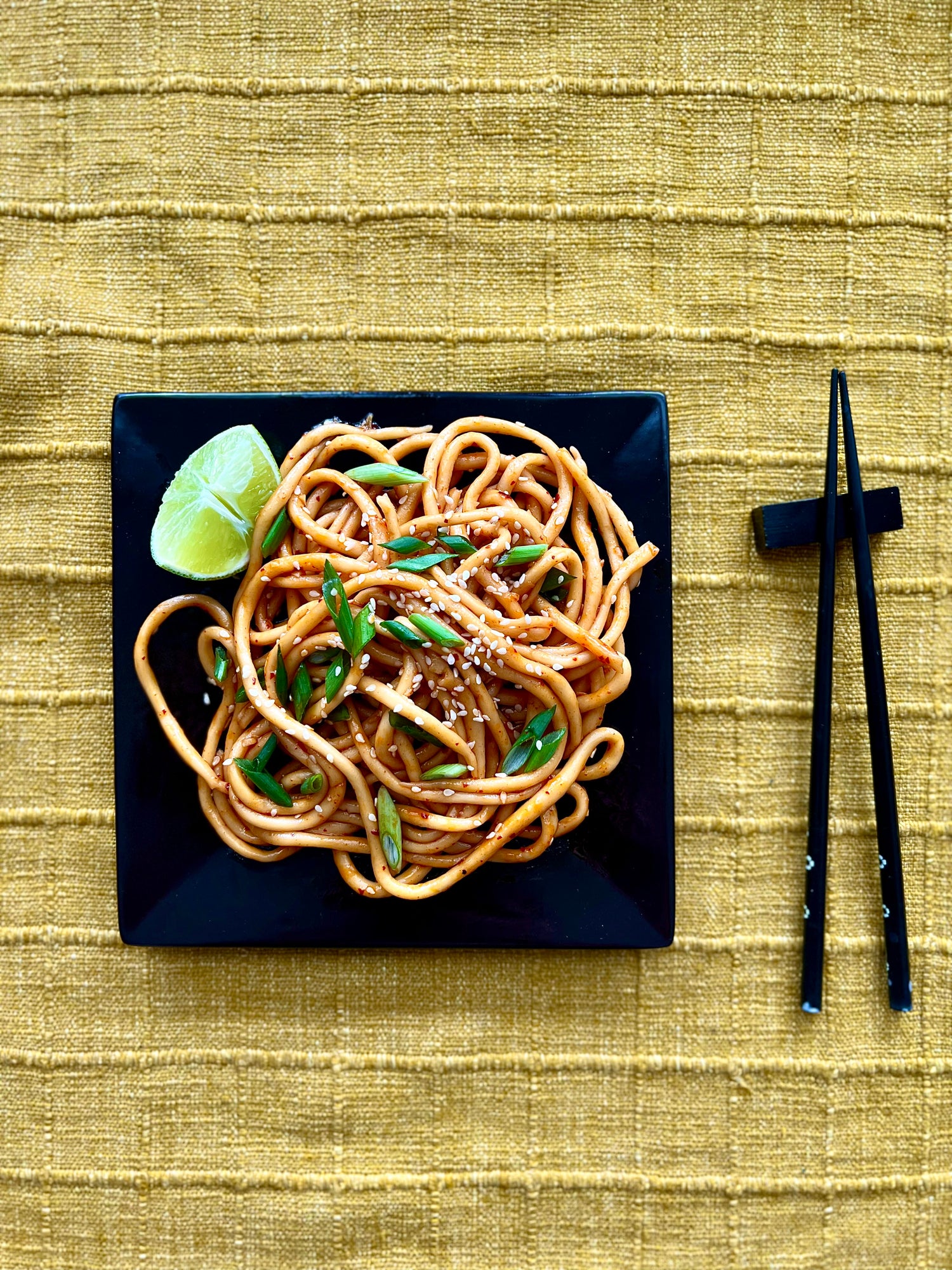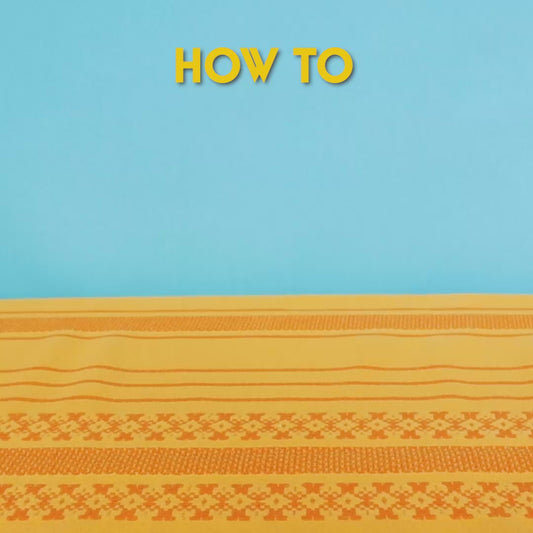
Jon Bennion's Gochugaru Pici Piccanti
Food can be the start of romance – especially when you go the extra mile and make something special by hand. That is where this pasta called “pici” (pronounced “peachy’) can help you fan the flames of love. Pairing these Tuscan hand-rolled noodles with some spicy/sweet Gochugaru Chilli Flakes makes it super special and festive. With the help of our partner in pasta, Jon Bennion (aka intermediatechef on IG) you'll definitely make this meal one your loved one won’t soon forget.
Serves: 2
Prep Time: 1 hour
Cook Time: 5-10 minutes
-
Ingredients
For the pasta:
200 g flour (about 1 ½ cups flour)
100 g warm water (just under ½ cup)
1 tsp sesame oilFor the sauce:
2-3 garlic cloves, minced
2 tsp fresh ginger, minced
2 tsp Spicewalla Gochugaru Chilli Flakes
2 Tbsp soy sauce
2 tsp sesame oil
1 ½ tsp sugar
1 lime
2 Tbsp vegetable or peanut oil
½ cup pici pasta water
2-3 scallions
sesame seeds8-10 medium shrimp (for skewering)
-
Print
Preparation
- Pile the flour on your counter or in a mixing bowl. I like to use a combination of AP flour with semola or semolina flour (about half and half of each). With the bottom of a cup, you can create a deep well in the center. Pour in the warm water and sesame oil and let it sit for a minute or two as the flour and water start to interact.
- If you are doing it on the counter, bring tiny bits of flour from the inside of the rim into the water and mix gently. Keep doing this until the liquid center becomes thicker and won’t spill. Bring larger amounts of the flour into the center, and cut it into the wetter portions. At this point, use your hands to grab all the contents and start smashing and pressing them together until it forms a shaggy dough ball. If you are using a mixer, use a dough hook attachment and mix until all of the ingredients are incorporated.
- The pici dough needs a 10 minute knead, which I always do by hand. Using your upper body strength, press down, stretch, refold, and turn your dough. Early on, it will look like a mess with a lot of bumps and irregularities. The kneading will help develop a great texture and smooth it out. About halfway through the knead, you'll feel it coming together better. At ten minutes, you should have a nice, smooth dough ball. Put it in plastic wrap or in a sealed plastic bag to rest for at least 30 minutes, or up to two hours.
- Remove the dough and place on your counter. With a rolling pin or your hands, thin out the dough until it’s about ¼ inch thick and in a rectangle shape. From here, you can place a damp paper towel over the top so the dough does not dry out as you hand roll the pici.
- The hand rolling works best on a large wooden cutting board or pasta board. If you don’t have that, just roll them out on your counter. If you are using your counter, you may need to brush the top of the pici dough with a bit of oil.
- To roll out the pici, cut a 1/8” section of the dough across the short side of the dough rectangle. Place on the cutting board or other surface and start rolling with both hands from the center toward the ends. The final noodles should be smaller in circumference than a pencil, and keep in mind they will plump up some when cooked. Place finished pici on a parchment-lined baking tray with some flour dusted on it to prevent sticking.
- You will want to cook your pici within an hour after rolling them or else they may begin to crack. Use this time to prep your ingredients and have everything on hand for the cooking process. It all goes really fast once you get going.
- Chop your ginger and garlic and put them in a pile. With some kosher salt on top of the ginger and garlic, take the sharp edge of your knife at an angle and scrape the ingredients together making a paste. This is a good time to chop your scallions.
- In a mug, put your soy sauce, sugar, sesame oil, a pinch of salt, and half a juice of lime and mix well. Get a pot of salted boiling water going. Pre-heat a non-stick pan on medium low heat.
- Put your pici in the boiling water. It will only need to cook for two minutes. During that two minutes, place the vegetable or peanut oil in your heated non-stick pan and lightly sauté your Gochugaru Chilli Flakes, and ginger garlic paste. Mix it around so all of the oil is flavored and you will see it turn a lovely orange color. Be careful not to burn the chilli flakes or the paste.
- When the pici is cooked, take ½ cup of the pasta water and place in your mug with the other ingredients. With tongs, take the pici out of the boiling water and place directly into the sauté pan and get them all coated with the oil.
- Dump the contents of the mug into the sauté pan and increase the heat to medium high as you gently stir the noodles. The starch from the noodles and pasta water will help the liquid turn into more of a sauce. Turn off the heat and throw in some of the chopped scallion and sprinkle with sesame seeds.
- Plate your noodles and top with more scallion, sesame seeds, some shrimp skewers and/or edamame, and some wedges from the other half of the lime.
- Enjoy!
Shop the Recipe
-
Gochugaru Chilli Flakes
5.0 / 5.0
(9) 9 total reviews
Regular price $9.99 USD$9.99 USD Sale price Regular priceUnit price / per


